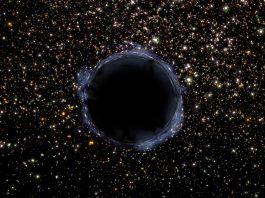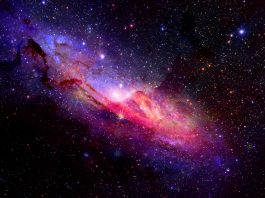Researchers have developed an innovative balloon-borne telescope called SuperBIT that rivals the performance of the Hubble Space Telescope at a fraction of the cost.
Designed in a collaborative effort between the University of Toronto, Durham University, Princeton University, NASA, and the Canadian Space Agency, The Superpressure Balloon-borne Imaging Telescope (SuperBIT) achieves high-resolution images comparable to that of Hubble, whilst costing 1000 times less.
It can take billions of years for light travelling from remote galaxies to reach our telescopes; in the last few seconds of this intergalactic journey, the light must navigate through the Earth’s turbulent atmosphere, making our view of the Universe blurred. State-of-the-art observatories can somewhat eliminate this problem; however, the only way to fully overcome this issue is to place telescopes in space, which is a considerably expensive process.
The genius of SuperBIT
SuperBIT provides an economical alternative to this interstellar problem; the groundbreaking telescope flies above 99.5% of the Earth’s atmosphere – 40km in altitude – carried by a helium balloon with a volume of 532,000 cubic metres, roughly the size of a football stadium. Additionally, the telescope is equipped with a 0.5-metre diameter mirror and, when flight-tested in 2019, displayed exceptional pointing stability, with variations less than one thirty-six thousandth of a degree for over an hour. This staggering accuracy should allow SuperBIT to attain images as sharp as the Hubble Space Telescope.
Such a method of space exploration has never been achieved before, due to balloons only being operational for a few nights, too short a duration for observations, with that recently changing due to the development of NASA’s superpressure balloons, which can store helium for months. The next launch of SuperBIT will be from Wanaka, New Zealand, where it will be carried by stable winds and circumnavigate the Earth multiple times, imaging the sky during the night and recharging through the day using solar panels.
SuperBIT has a budget of £3.62m for the construction and operation of the first telescope, costing 1000 times less than satellites that achieve similar results. In addition to balloons being significantly cheaper than rocket fuel, SuperBIT can be returned to Earth multiple times to tweak its design. In contrast, satellites must work the first time, meaning their technology is often outdated from tried and tested past missions. Camera technology is evolving every year, so relying on decade-old equipment may put a glass ceiling on scientific discoveries, whereas SuperBIT enables the team to use the latest cutting-edge camera equipment, which can be upgraded at any time, or even have new instruments added.
The future of telescopes
When the Hubble Space Telescope inevitably fails, it will not be repaired, and once gone, ESA/NASA missions will only be able to image at infrared wavelengths like the soon to be launched James Webb Space Telescope, or at a single optical band like the Euclid observatory that launches next year.
When this occurs, SuperBIT will be the only technology in the world proficient in high-resolution multicolour optical and ultraviolet observations, with the team already designing upgrades of its 0.5-metre aperture telescope to 1.5 metres. This larger instrument will far exceed Hubble, due to its wide-angle lens and increased megapixels, with its cheap cost making a fleet of SuperBIT’s viable.
Mohamed Shaaban, a PhD student at the University of Toronto, said: “New balloon technology makes visiting space cheap, easy, and environmentally friendly. SuperBIT can be continually reconfigured and upgraded, but its first mission will watch the largest particle accelerators in the Universe: collisions between clusters of galaxies.”
The goal for the SuperBIT flight scheduled for 2022 is to analyse dark matter particles by using gravitational lensing, with the telescope examining whether dark matter slows down during collisions. Currently, no particle accelerator can accelerate dark matter, but this is a key signature predicted by theories that may explain the strange behaviour of muons.
“Cavemen could smash rocks together, to see what they’re made of,” added Proffesor Richard Massey of Durham University. “SuperBIT is looking for the crunch of dark matter. It’s the same experiment; you just need a space telescope to see it.”









